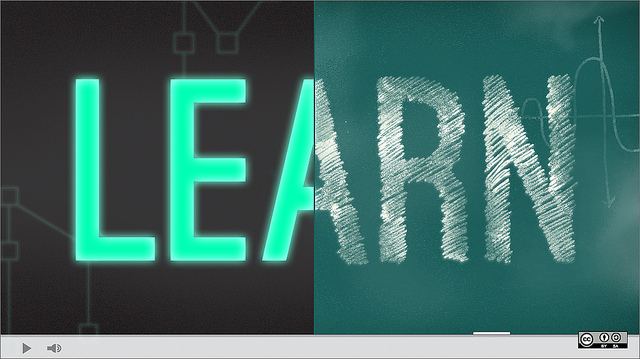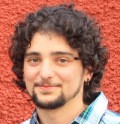
img via flickr by opensource.com
“Education is the kindling of a flame, not the filling of a vessel” – Socrates
In his book Out of Our Minds: Learning to be Creative Sir Ken Robinson defines creativity as “the process of developing original ideas that have value.” In his opinion, to be creative means to play with ideas. Enjoyment and the use of our imagination are necessary elements of creativity. That sounds great, doesn’t it? Now you must be thinking: I would like to be creative!
Perhaps you do not see yourself as a creative person, or have not personally met many creative people in your life and therefore you might be suspicious of the definition above. Well, you are right to be suspicious because there are certain conditions that need to be fulfilled if we want to kindle our creativity. For Ken Robinson, one of them is “a love for particular materials or instruments”. Another condition would be “working in a highly focused way on ideas and projects, crafting them into their best forms”. And he also points out that “creativity also draws on skill, knowledge and control”. Maybe at this point some of you might be starting to feel skeptical about the possibility of doing something creative. Keep reading if you are asking yourself this question: Can I be creative at all?
We all know about the huge creative capacities that children have. Somehow, most of us lose them as we grow up. Can we as adults be creative persons again? Yes, we can, but creativity is not going to happen overnight because it is a process. The author believes that “we are all born with immense natural talent but too few people discover what they are and even fewer develop them properly.” Why is that so? Ken Robinson give us a very clear and disturbing answer: it is the educational system’s fault. Ironically enough, education is to blame. A lot of talent is going to waste because our educational systems are obsessed with certain types of academic ability and standardized testing.

img via flickr by opensource.com
Parents and teachers need to be aware that “creativity is possible in every discipline and should be promoted through the whole of education”. Sadly, traditional methods of teaching and standardized testing have stifled creativity in the classroom for too long. However, nowadays more and more teachers are willingly taking the role of guides and facilitators because it allows them to engage with their teaching and with their students more effectively. It is time for a change, and the new technologies can help us if we learn how to use them properly. In many parts of the world, teachers have access to the new technologies and use them out of the classroom in their daily lives. They should be encouraged to use their laptops, tablets and smart phones in the classroom too because they can help our students to be creative in new ways.
There is one teacher who believes that creativity can be promoted in the foreign language classroom. In his inspiring article My best languages lesson: putting Spanish into practice with online books, José Picardo explains how he gets his Spanish class to write and produce their own virtual stories using a web-based tool called Storybird. This tool offer students (and educators) many possibilities to develop their creativity. Students can create art-inspired picture books, serialized long form stories, and poetry.
They can write and publish their own books in a safe environment. It can be used to consolidate pre-existing knowledge, to work on a grammar point, to expand vocabulary, etc. The wide choice of illustrations available help to spark creativity. The result of the process is a tangible outcome that have value (e-book) and that can be reviewed by the teacher and the other students. And more importantly, students enjoy using this tool because they love the instrument (laptop or PC) and enjoy applying their knowledge and imagination.
This is a great example of how the use of the new technologies can help students to get involved in their process of learning and be more creative. I cannot wait to use it with my students and see their creativity unfold!
–
You’ve been reading a guest post by Alberto Castilla

“My name is Alberto Castilla. I began teaching languages six years ago and I do not believe teaching is a vocation. I believe it is vocational, as in something you can train people to do. I am a teacher because I enjoy helping others learn and think autonomously. I have lived in different countries and learned English, Italian and Chinese. I teach Spanish online at ayaespanol.com and English offline. I am interested in education and language learning.”
